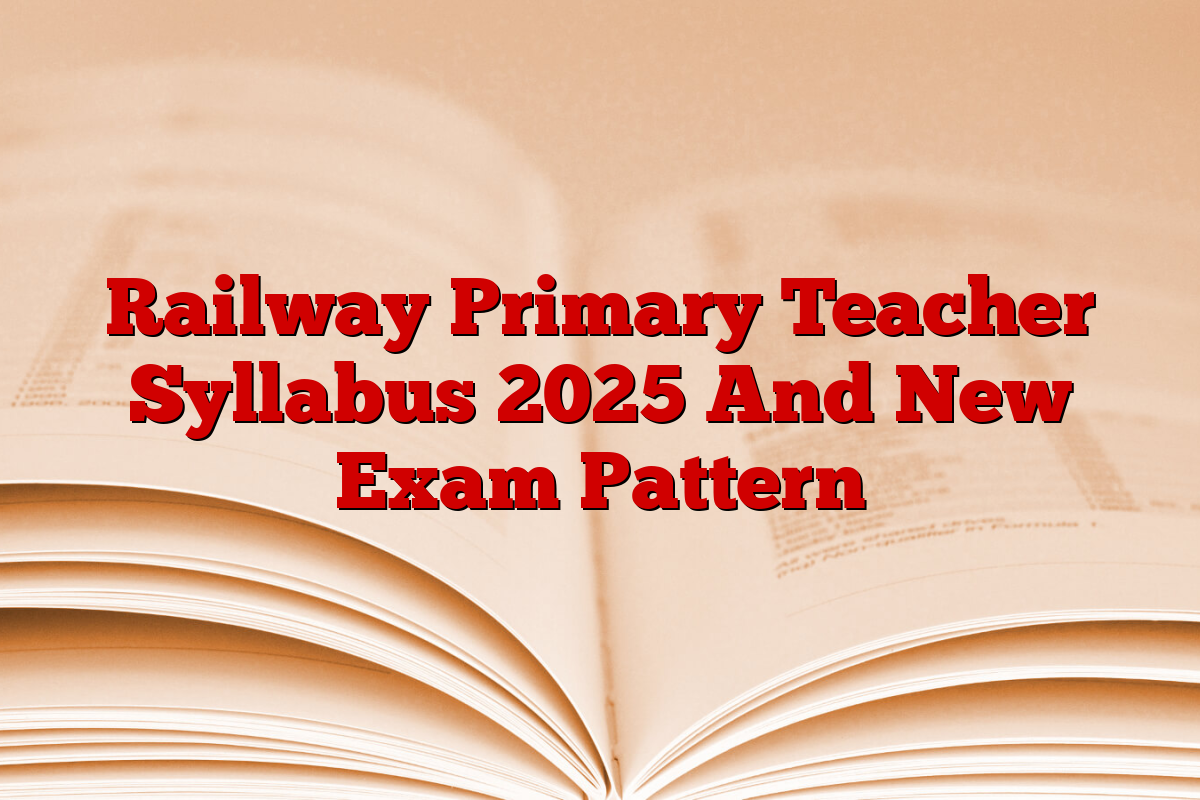| Railway Teacher Exam Pattern 2025 for Primary Teacher |
| Sl. No. |
Subject |
Number of questions |
| A |
Understand the learner |
18 to 20 |
| – The concept of development, maturity, and development, debate of principles and development, development works and challenges. |
| -Domain of development: physical, cognitive, socio-emotional, moral, etc., deviation in development and its implications. |
| – Understanding adolescence: requirements, challenges and implications for institutional support design. |
| – Role of primary and secondary socialization agencies. To ensure continuity of home-school. |
| B |
Understanding teaching teaching |
18 to 20 |
| – Theoretical outlook on learning – Behaviorism, cognitives, and composition with special reference to their implications: |
| – Role of teacher |
| – Role of learner |
| -The nature of teacher-student relationship |
| – The choice of teaching methods |
| – Class environment |
| – understanding of discipline, power, etc. |
| – Factors affecting learning and their implications for it: |
| – Design class instructions |
| – Planning student activities |
| – Creating a place to learn in school |
| -Organization of scheme and teaching education |
| – Concept of courses and courses, overt and hidden courses |
| – Basic literacy and numerical, childhood care and education |
| -Youle-based education, experienced education, etc. |
| – Directive Plans – Year Plan, Unit Plan, Text Plan |
| – Directive materials and resources |
| -Information and Communication Technology for Teaching (ICT) |
| – Assessment of learning, to learn, and as learning: Each plan in planning, purpose, and idea. |
| -Increasing education-teaching processes: class observation, response, reflection, and dialogues as a means of creator teaching. |
| C |
Creating a favorable learning environment |
4 to 6 |
| -The concepts of retirement, disability and inclusion, implications of disability as a social construction, type of disability-identity and intervention |
| – Provisions for the concept of mental health, guidance and consultation while addressing the therapeutic, preventive and preacher dimensions of mental health for all students and employees. |
| – Developing school and community as a learning resource. |
| D |
School organization and leadership |
4 to 6 |
| – Leader as a reflective businessman, team builder, creator, coach and mentor. |
| – perspective on school leadership – directed, distributed and transformative. |
| – Vision building, goal setting and making a school development plan |
| -Using school procedures and forums to strengthen training-teach-learning: Annual calendar, time-tabling, parent-teacher forum, school assembly, teacher development forums, teaching-teaching, school self-assessment and improvement for improvement Using achievement data. |
| -To form partnerships with Samudaya, industry and other neighboring schools and higher education institutions. |
| ET |
Approach in education |
2 to 3 |
| – School role in achieving the objectives of education. |
| -NEP-2020: Early childhood care and education: the foundation of learning; Basic literacy and numerical; Courses and education in schools; Overall and integrated teaching; Justice and inclusive education: learning for all; Qualification-based learning and education. |
| – Guiding for child rights, protecting and providing children’s rights for a safe and safe school environment, for the right -free and compulsory education act, 2009 of children. |
| – Historical studies of national policies in education with special reference to school education. |
| – School course theory: perspective, learning and knowledge, course field, school phase- Education and evaluation. |
|
Total |
50 |

